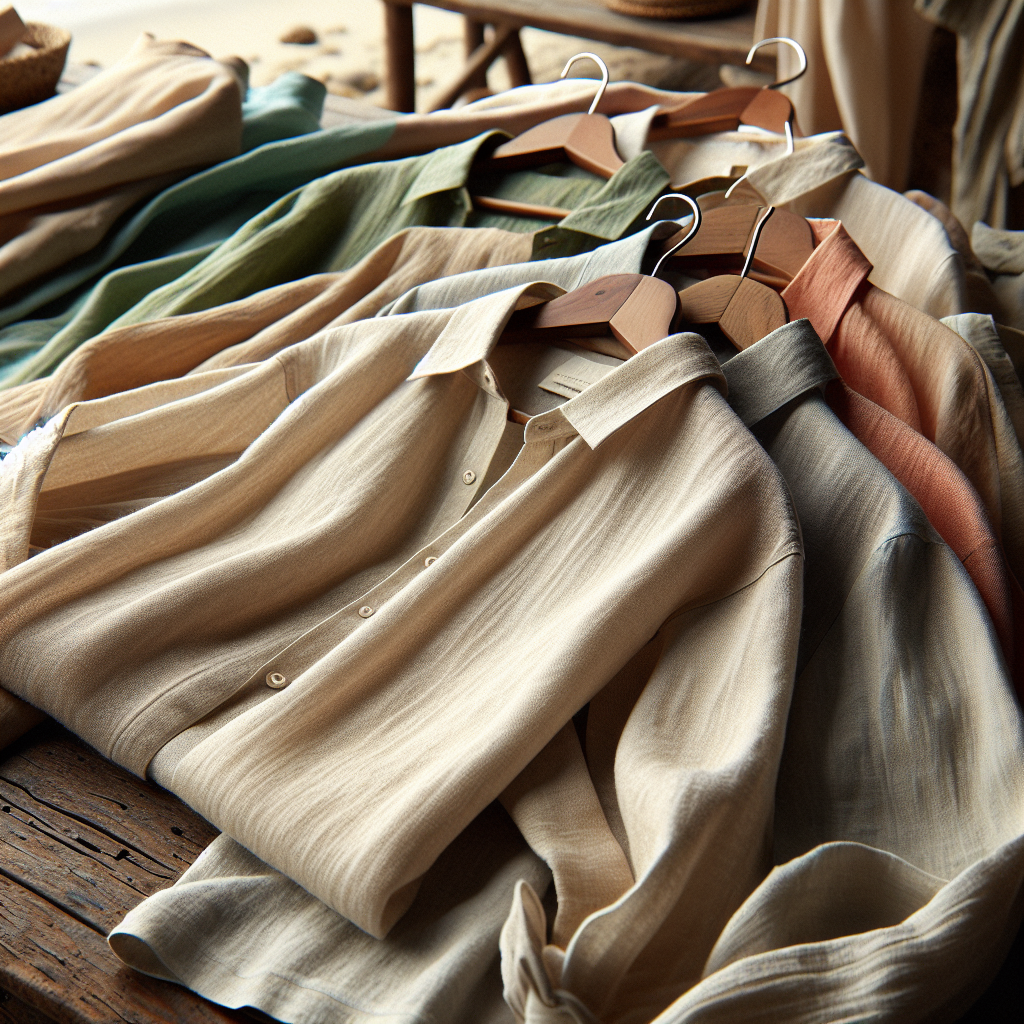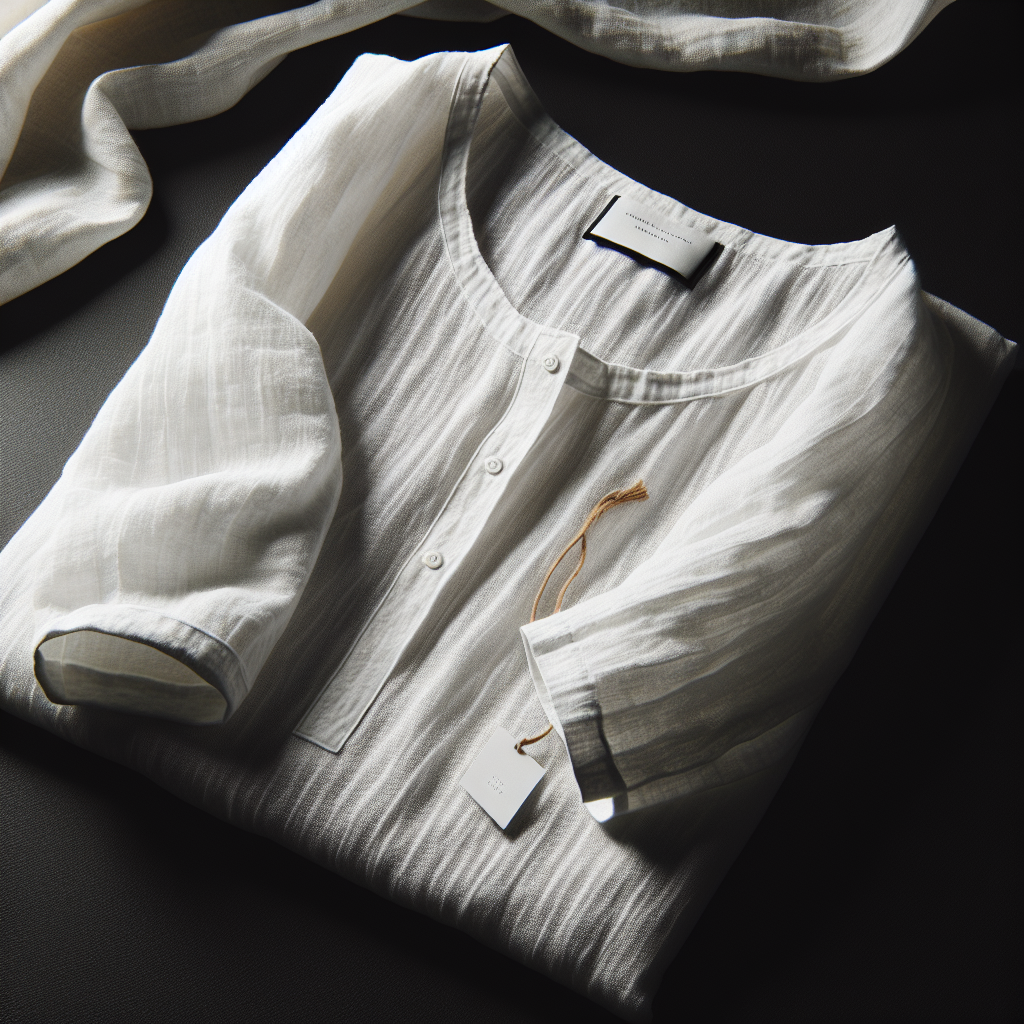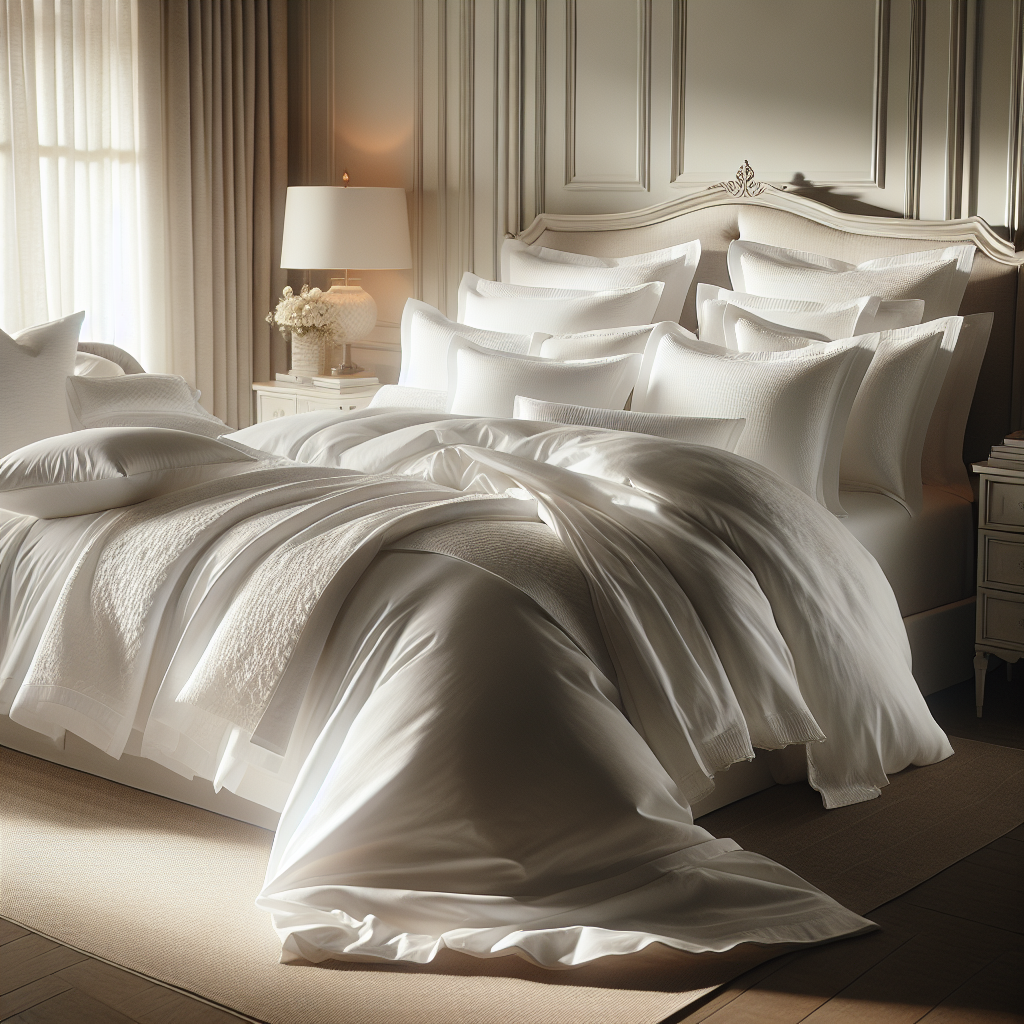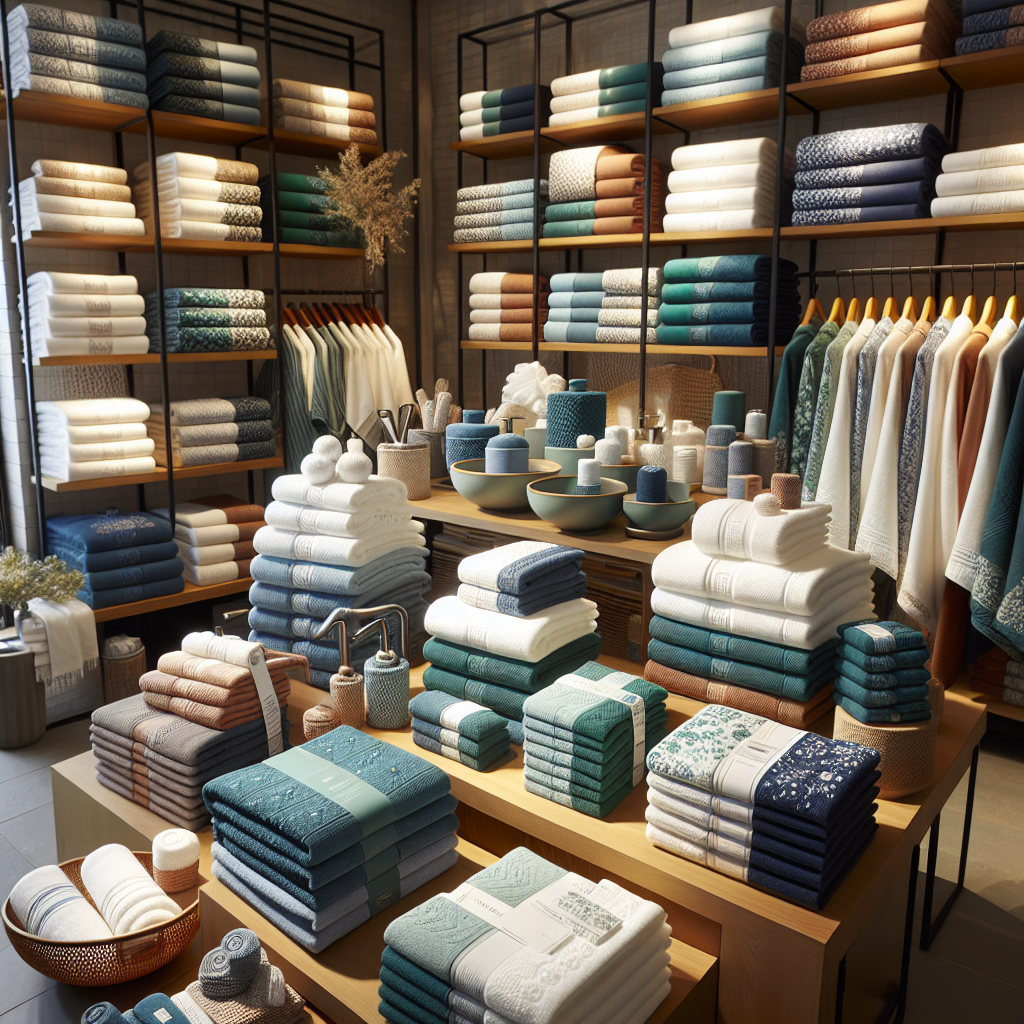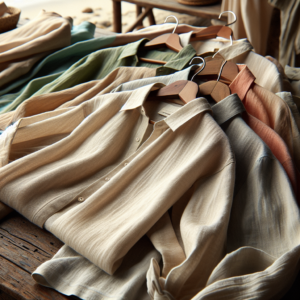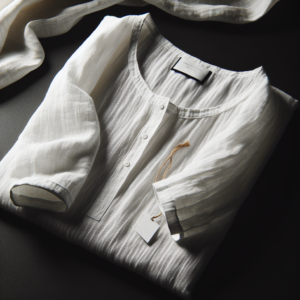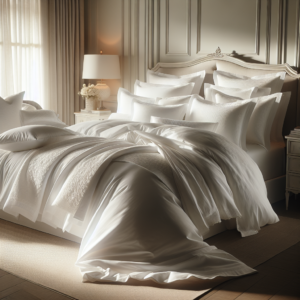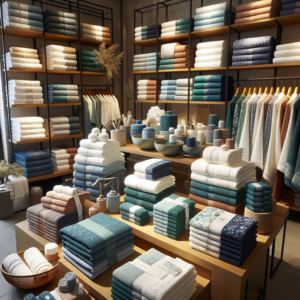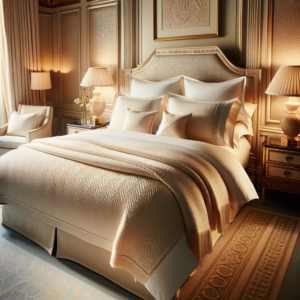The Benefits of Using French Linen for Your Home Décor
When it comes to home décor, there are endless options to choose from. From furniture to accessories, the choices can be overwhelming. However, one element that often gets overlooked is the type of fabric used in home furnishings. While there are many options available, one that stands out for its quality and elegance is French linen.
French linen has been a staple in home décor for centuries, and for good reason. This luxurious fabric is made from the fibers of the flax plant, which is grown in the northern regions of France. The cool and damp climate of this region is ideal for growing flax, resulting in a strong and durable fabric.
One of the main benefits of using French linen in your home décor is its durability. Linen is known for its strength and can withstand frequent use and washing without losing its shape or color. This makes it a practical choice for items such as curtains, tablecloths, and bedding, which are often subjected to daily wear and tear.
In addition to its durability, French linen also has a unique texture that adds a touch of elegance to any room. The fabric has a natural luster and a slightly rough texture, giving it a rustic yet refined look. This makes it a versatile choice for both traditional and modern home décor styles.
Another advantage of using French linen in your home is its breathability. Linen is a highly breathable fabric, allowing air to flow through it easily. This makes it an excellent choice for items such as bedding and curtains, as it helps to regulate temperature and keep you cool in the summer and warm in the winter. This also makes it a great choice for those with allergies, as it is hypoallergenic and resistant to dust mites.
French linen is also known for its moisture-wicking properties. The fabric has the ability to absorb up to 20% of its weight in moisture without feeling damp. This makes it an ideal choice for items such as towels and bathrobes, as it will dry quickly and prevent the growth of bacteria and mold.
Aside from its practical benefits, French linen also adds a touch of luxury to any home. The fabric has a timeless and sophisticated look that can elevate the overall aesthetic of a room. Whether used in the form of curtains, bedding, or even upholstery, French linen adds a touch of elegance and refinement to any space.
Furthermore, French linen is an environmentally friendly choice for home décor. The flax plant requires minimal water and pesticides to grow, making it a sustainable and eco-friendly option. Additionally, linen is biodegradable, meaning it will not contribute to environmental pollution once it is disposed of.
In conclusion, French linen is a versatile and practical choice for home décor. Its durability, unique texture, breathability, and moisture-wicking properties make it a top choice for items such as bedding, curtains, and towels. Its luxurious look and eco-friendly nature are added bonuses that make it a popular choice among homeowners and interior designers alike. So, if you want to add a touch of elegance and sophistication to your home, consider incorporating French linen into your décor.
How to Care for Your French Linen Products to Ensure Longevity
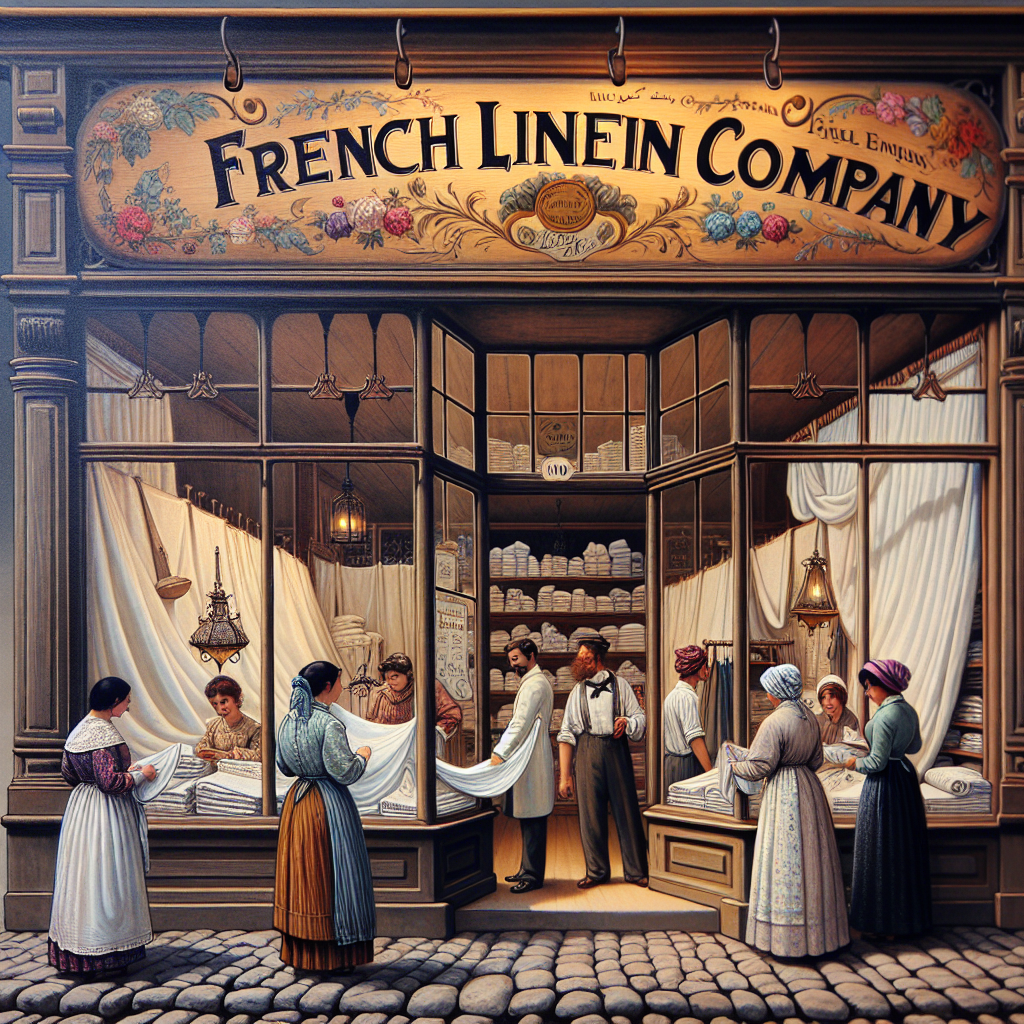
French linen is known for its luxurious feel, durability, and timeless elegance. It is a popular choice for bedding, tablecloths, and clothing due to its natural fibers and high-quality production. However, like any other fabric, French linen requires proper care to maintain its beauty and longevity. In this article, we will discuss how to care for your French linen products to ensure they last for years to come.
First and foremost, it is essential to understand the characteristics of French linen. It is made from flax fibers, which are known for their strength and absorbency. This makes French linen highly durable and able to withstand frequent use and washing. However, it is also prone to wrinkles, which is a natural characteristic of linen. Embracing the wrinkles is part of the charm of French linen, but there are ways to minimize them.
When it comes to washing your French linen products, it is crucial to follow the manufacturer’s instructions. Most French linen products can be machine washed, but it is recommended to use a gentle cycle with cold water. Hot water can cause shrinkage and damage to the fibers. It is also best to use a mild detergent that is specifically designed for delicate fabrics. Avoid using bleach or harsh chemicals as they can weaken the fibers and cause discoloration.
After washing, it is essential to properly dry your French linen products. It is best to air dry them by laying them flat on a drying rack or hanging them on a clothesline. Avoid using a dryer as the heat can damage the fibers and cause shrinkage. If you must use a dryer, use the lowest heat setting and remove the items while they are still slightly damp. This will help prevent excessive wrinkling.
Ironing is another crucial step in caring for your French linen products. As mentioned earlier, linen is prone to wrinkles, but ironing can help smooth them out. It is best to iron your French linen while it is still slightly damp. This will make the process easier and more effective. Use a medium to high heat setting and iron on the reverse side of the fabric to avoid any potential damage to the fibers. If you prefer a more relaxed and natural look, you can skip the ironing step and embrace the wrinkles.
Storing your French linen products properly is also essential for their longevity. It is best to store them in a cool, dry place away from direct sunlight. Avoid storing them in plastic bags or containers as they can trap moisture and cause mildew. Instead, use breathable fabric bags or wrap them in acid-free tissue paper. This will help protect them from dust and keep them fresh until their next use.
In addition to proper washing and storage, there are a few other tips to keep in mind when caring for your French linen products. Avoid using fabric softeners as they can leave a residue on the fabric and reduce its absorbency. If you spill something on your linen, it is best to treat the stain immediately. Blot the stain with a clean cloth and use a mild detergent to spot clean. Avoid rubbing the stain as it can cause it to spread and become more difficult to remove.
In conclusion, French linen is a beautiful and durable fabric that can last for many years with proper care. By following these tips, you can ensure that your French linen products maintain their quality and elegance. Remember to always read and follow the manufacturer’s instructions, and don’t be afraid to embrace the wrinkles – they are part of the charm of French linen. With the right care, your French linen products will continue to bring beauty and comfort to your home for years to come.
Exploring the History and Tradition of French Linen Production
French linen has long been renowned for its quality, durability, and elegance. For centuries, the French have been producing some of the finest linen in the world, and their expertise in this craft has been passed down through generations. The history and tradition of French linen production is a fascinating one, filled with stories of innovation, hard work, and a deep appreciation for the natural resources of the land.
The origins of French linen production can be traced back to the 12th century, when flax was first introduced to the region. Flax, a plant with delicate blue flowers, is the primary material used in the production of linen. The favorable climate and fertile soil of France made it the perfect place for flax cultivation, and soon, the country became a major producer of this versatile plant.
In the early days, linen production was a labor-intensive process that involved several stages. The first step was to plant the flax seeds, which were then harvested and dried. The dried flax was then retted, a process that involved soaking the flax in water to loosen the fibers from the plant. After retting, the flax was then scutched, which involved beating the fibers to remove any remaining impurities. The final step was to spin the fibers into yarn, which was then woven into linen fabric.
The production of linen was a time-consuming and physically demanding process, but the French were determined to perfect it. They experimented with different techniques and machinery, and by the 17th century, they had developed a more efficient method of producing linen. This involved using water-powered mills to spin the flax fibers into yarn, which significantly reduced the time and effort required for production.
The 18th and 19th centuries saw a boom in the French linen industry, with the demand for linen increasing both domestically and internationally. The French were known for their attention to detail and their commitment to producing high-quality linen, which made their products highly sought after. The linen produced in France was not only used for clothing but also for household items such as bedding, tablecloths, and towels.
One of the most significant developments in the French linen industry came in the 19th century with the invention of the Jacquard loom. This revolutionary machine allowed for intricate patterns and designs to be woven into the fabric, making French linen even more desirable. The Jacquard loom also increased the speed of production, making it possible to meet the growing demand for linen.
Today, the French linen industry continues to thrive, with many companies carrying on the tradition of producing high-quality linen using traditional methods. One such company is the French Linen Company, which has been in operation since 1888. This family-owned business is dedicated to preserving the heritage of French linen production and has become a symbol of excellence in the industry.
The French Linen Company sources its flax from local farmers, ensuring that only the best quality fibers are used in their production. They also use traditional techniques, such as hand-harvesting and natural retting, to produce their linen. This attention to detail and commitment to quality is what sets French linen apart from others in the market.
In conclusion, the history and tradition of French linen production are deeply rooted in the country’s culture and heritage. From its humble beginnings to its current status as a symbol of luxury and elegance, French linen has stood the test of time. The dedication and craftsmanship of the French people have made their linen products highly coveted around the world, and it is a tradition that will continue for generations to come.

